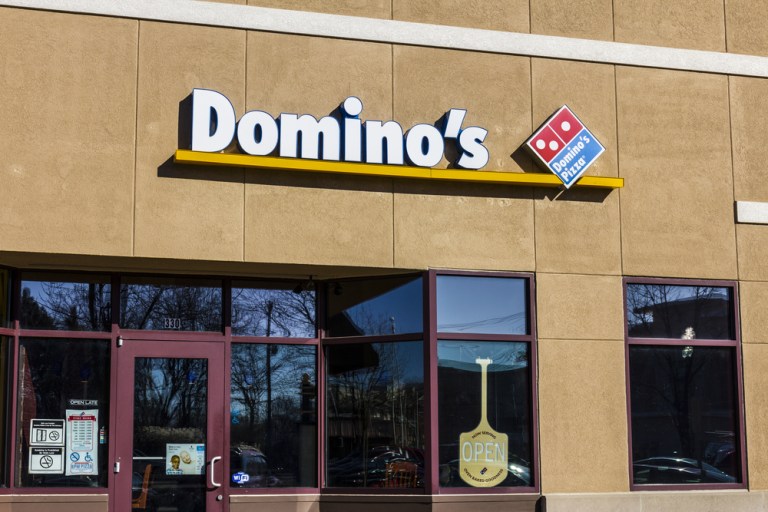
Domino’s Pizza disappointed Wall Street investors on Thursday (July 19) after the world’s leading pizza chain reported slower-than-expected growth during the second quarter. However, the company announced new investments in supply chain infrastructure and showed positive customer response to its new deliver-everywhere hotspot platform.
Chief Financial Officer Jeffrey Lawrence told analysts during the quarterly conference call that, while the company was pleased overall with the growth, it had slower-than-expected international growth in stores during the first half of the year. He said the company doesn’t see any structural or material market-related reason for the slowdown, and reiterated the chain’s prior forecast of 6 percent to 8 percent global growth in new stores over the next three to five years.
Lawrence said Domino’s continues to invest heavily in technology, and raised the level of investment in its supply chain capacity, mainly for its new U.S. supply chain center set to open later this year. It continues to invest in supply chain capacity and will begin work on two additional supply chain centers, set to be complete in the next 18 to 24 months. Gross capital spending will, therefore, increase to $115 million to $120 million, up from the previous guidance of $90 million to $100 million. The chain is opening up the new supply chain center in Edison, NJ later this year and plans to accelerate work on the two additional supply chain centers.
The company’s new CEO Rich Allison noted that the chain is pleased with the launch of its Domino’s Hotspots ordering platform, a delivery app that allows delivery to parks, beaches and tourist sites. Domino’s has 200,000 hotspot delivery platforms nationwide and wants customers to suggest new locations.
“We continue to demonstrate our ability to invest and innovate in a flexible manner, to maintain our unquestioned digital leadership position within this category,” Allison said.
Allison, the former president of the company’s international business, assumed the position after the retirement of J. Patrick Doyle, who stepped down after eight years as CEO and president. Russell Weiner, who was president of Domino’s USA, was named to the newly created post of COO and president of the Americas.
Responding to an analyst question, Allison said the company is ramping up testing of its automated phone ordering technology, as well as testing the service in 20 of its corporate-owned locations. He noted that the service is moving along better than initial expectations. He added that the company is continuing to leverage its PULSE point-of-sale (POS) system to international franchisees, with the system in more than 12,000 stores globally and several new international markets set to roll out the system.
The Ann Arbor, MI-based company reported same-store sales growth of 6.9 percent in the U.S. during the quarter, which was lower than the year-ago growth of 9.5 percent. Same-same store sales grew 5.1 percent at its company-owned stores, compared with 11.2 percent in the same quarter last year. Same-store sales internationally grew at a rate of 4 percent for the quarter, compared with 2.6 percent in the same 2017 quarter.
Domino’s reported net income of $77.4 million or $1.78 a share in the second quarter, compared with $65.7 million or $1.32 per share in the same quarter a year ago. Revenue rose 24 percent to $779.4 million in the quarter from $628.6 million a year ago. Shares of Domino’s fell $6.93 or 2.44 percent, to close at $276.75, after rising more than 50 percent since the beginning of the year.
The company had 396 corporate-owned stores in the U.S. as of June 17, while it had 5,296 franchise stores domestically and 9.430 international stores. The total number of domestic stores was down one from the first quarter, while gains were reported in the franchise and international segments.